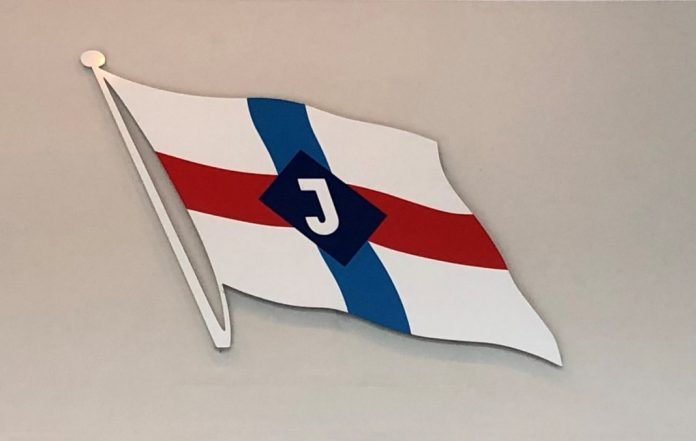Cross-ownership, straw men, flags of convenience. Shipping companies have long traditions that can adapt to increase earnings, not least under distant skies. Norwegian wellboat owners are also adapting.
In the past week, SalmonBusiness has reported on how Norwegian wellboat owners Roger Halsebakk, Odd Einar Sandøy and Sverre Taknes have organised themselves to exercise ownership control over a rapidly increasing wellboat fleet in Chile. As the world’s second-largest salmon producer, Chile is a very attractive country to transport fish.
The catch is that the country’s laws do not allow foreigners to control shipping companies that are in coastal shipping in Chile.
The Norwegian have attacked this challenge in different ways.
Cross-border
Odd Einar Sandøy is the owner of, measured by turnover, the world’s largest wellboat company, Rostein. He has made a private move, with a 22 per-cent stake and minority ownership in the Chilean wellboat shipping company Naviera Orca.
Sverre Taknes is chief executive and second-largest owner of Aquaship, the wellboat company controlled by the US private equity fund AMERRA. Aquaship has built creative cross-ownership between several companies in Chile to secure control of three subsidiaries in this segment.
Sølvtrans chief Roger Halsebakk has allowed his director of subsidiary Sølvtrans Chile, Victor Vargas Vega, to buy 51 per-cent of the company for USD 130,000. Sølvtrans Chile owns and operates five wellboats.
Coup?
In the latter case, Vargas Vega seems to have made a historic shipping coup, by buying half of a wellboat company with a fleet with a gross value of around EUR 90 million. Or he’s just a straw man for the parent company in Norway.
Naviera Orca’s managing director, Ezequias Alliende, is disputing the legality of Sølvtrans’ and Aquaship’s procedures in Chile. Therefore, several lawsuits are currently underway in this complex case.
The Legal Dictionary defines straw man in the following way: “A person to whom title to property or a business interest is transferred for the sole purpose of concealing the true owner and/or the business machinations of the parties. Thus, the straw man has no real interest or participation but is merely a passive stand-in for a real participant who secretly controls activities.”
The role of straw man can be explained with a glance at the history of one of Norway’s greatest shipowners, Anders Jahre:
“At the top of the flagpole, at the entrance to the whitewashed manor house, a vimpel flag swayed in blue and yellow. Anders Jahre had bought the 300-year-old large estate Ousbyholm in Skåne (Sweden .ed). From the hunting grounds around the castle, the shipowner could supply Kosmos’ general meeting dinners with pheasants. Like all princes, he had to stick with his own reserve, where he could hunt with the castle neighbour and shipbroker Jørgen Lorentzen. Neutral Sweden would prove to be very important to the ambitious Jahre,” writes the book “Den siste olje” published by Octavian Forlag.
Partnership
“He was a supporter of partnerships in business. Together with Lorentzen and Gustav Bull, Jahre founded a number of shipping companies in the 1930s. The twin companies Kosmos and Kosmos II (which were merged after the war) also contracted their own tankers. At the outbreak of war, Jahre was a co-owner of eight tankers, divided into several shipping companies. One of these shipping companies, Pankos (a name combination of Panama/Kosmos) Operating Company, owned the war-damaged tanker “Janko”, which at the German invasion of Norway, lay in dock in Amsterdam. The shipping company was controlled by Jahre and Lorentzen. In early May 1940, Jahre handed over the shares in Pankos to his Swedish friend, straw man and shipbroker Gösta Dalman, for a note payable of USD 105,000, along with an option to buy all shares at the fixed price back after the war. The option agreement was arranged by Jørgen Lorentzen the day after Germany’s invasion of Norway, in Sweden. The purpose was to prevent the Germans from seizing “Janko”.”

Umbrella
“Pankos was to become a big customer at Götaverken (shipyard in Gothenburg, Sweden .ed). The shipping rates had risen sky high. The juicy cash flow of the war was used to contract several tankers at Swedish shipyards. By virtue of its neutrality, Sweden was able to build ships during the war, and was exempt from the special Norwegian contracting restrictions in the years following. Pankos received USD 920,000 from Nortraship for the war effort. Jahre bypassed the Norwegian financing difficulties, and currency hunters in the Ministry of Commerce, after the war,” the book stated.
“Part of the fleet expansion under Dalman’s umbrella was financed by loans from Spermacet (another Jahre company .ed). If one were to grow, it would have to happen under a foreign flag. Driven by commodity and currency shortages, the Gerhardsen government provided an increasingly tight needle eye to build new ships after the war. This developed into a decision that introduced a full contract for new ships in January 1949.”
Branch
The extensive use of straw man was central to the building of Anders Jahre’s hidden foreign wealth. During the 1950s Jahre would become the largest tanker owner in Scandinavia, with a fleet of 350,000 tonnes.
Have Norwegian wellboat owners learned from the old shipping maestro? And is Chilean corporate legislation sufficient to stop the country’s wellboat industry from becoming a Norwegian branch?
It is among the issues now being investigated in Chilean courts.


